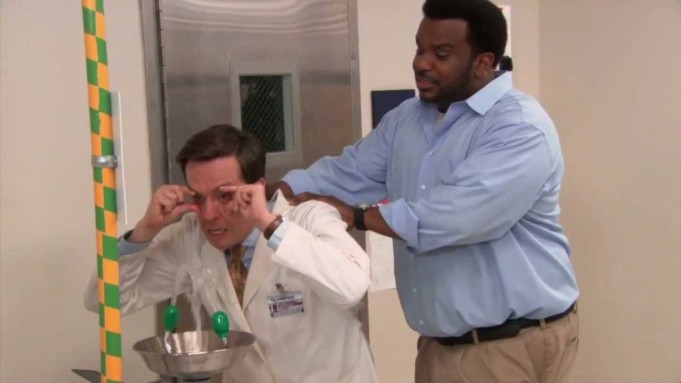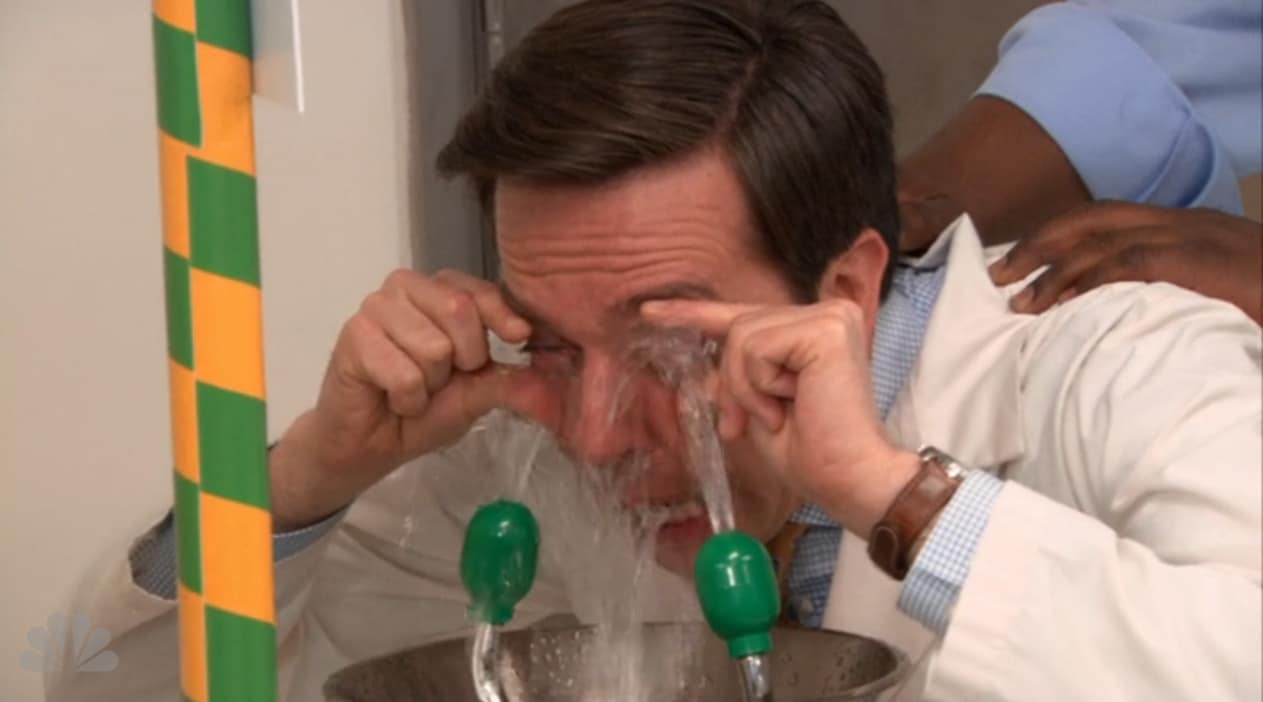A look at using Eyewash Stations from MedTree Medical Europe, a worldwide distributor of medical supplies to first aiders, medical personnel, emergency services and peace officers. If you work around unusual chemicals, hot liquids or other hazardous materials an eyewash station is probably a familiar sight to you…but does it just fade into the background after a while?
The first fifteen seconds are often crucial when it comes to eye injuries, so it’s vitally important to make sure you’re familiar with the procedure needed and the equipment involved. Unless you’re lucky enough to be right beside a plumbed-in eyewash station this is likely to be a portable eyewash station.
Here we present a few tips for making sure you’ll be prepared to use one effectively should the need arise.
Know Your Routes
Know how to get to your nearest eyewash station, and a back-up/second closest if there is one. Ensure the path between you and the station is always clear, if their are obstructions health and safety risks may be present.
Practice getting from your work station to the eyewash location with your eyes closed if possible. If you’re alone in the workplace and suffer an eye injury being able to help yourself quickly could be the difference between a minor injury and blindness.
Just as important if you’re in an environment hazardous enough to need plumbed-in eyewash stations or decontamination showers, is knowing your route to the next step in the treatment chain. Ensure both you and your co-workers know what happens next after using a portable eyewash station.
Use Good Technique
Don’t just squirt water onto the iris/pupil, the patient (or you) should roll their eyes and try and rinse off as much surface area as possible. Maintain a steady but low positive pressure, hopefully this should make it no more uncomfortable than it already is.
If the patient is wearing contact lenses they should be removed as soon as possible, before using eyewash if at all possible. Lenses can exacerbate damage from certain chemicals and the first treatment in this kind of eye injury should be to remove them.
Consider Wearing Glasses
Speaking of contact lenses, if you wear them you may want to consider moving to glasses, at least in the workplace. Not only will they provide additional protection for your eyes, but they also prevent any complications which might arise from sustaining an eye injury from hot liquids or corrosive chemicals.
Don’t Rub Your Eyes Or Try To Remove Objects
If an eye injury was caused by dust, particulate matter, metal shavings or similar then rubbing the eyes or attempting to remove debris yourself is often one of the worst things one can do.
If you’re self-administering treatment focus on washing enough debris out that you can see well enough to get help. You aren’t the best person to be picking flecks of matter out of your own eyes, for obvious reasons!
Wash Both Eyes
Even if they don’t need it. Even if you’re 100% sure only one eye was effected. Wash both eyes anyway.
Whether you have first aid responsibility in your workplace or just wondering what that green box with the water bottles is for we hope there were some helpful tips there for you!













